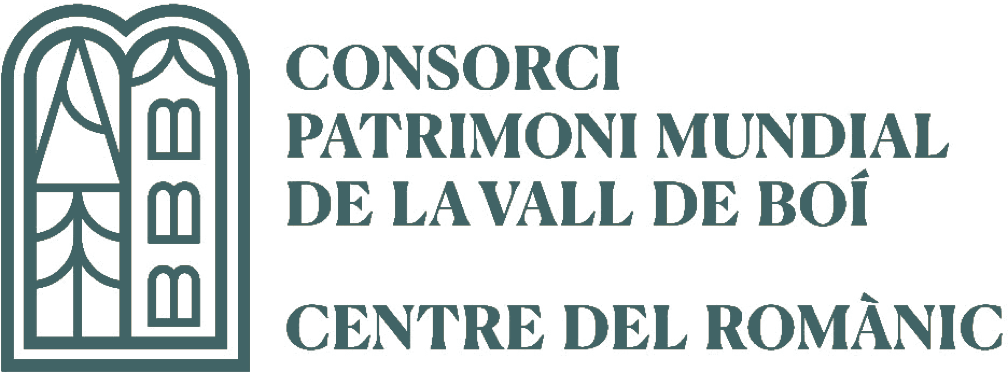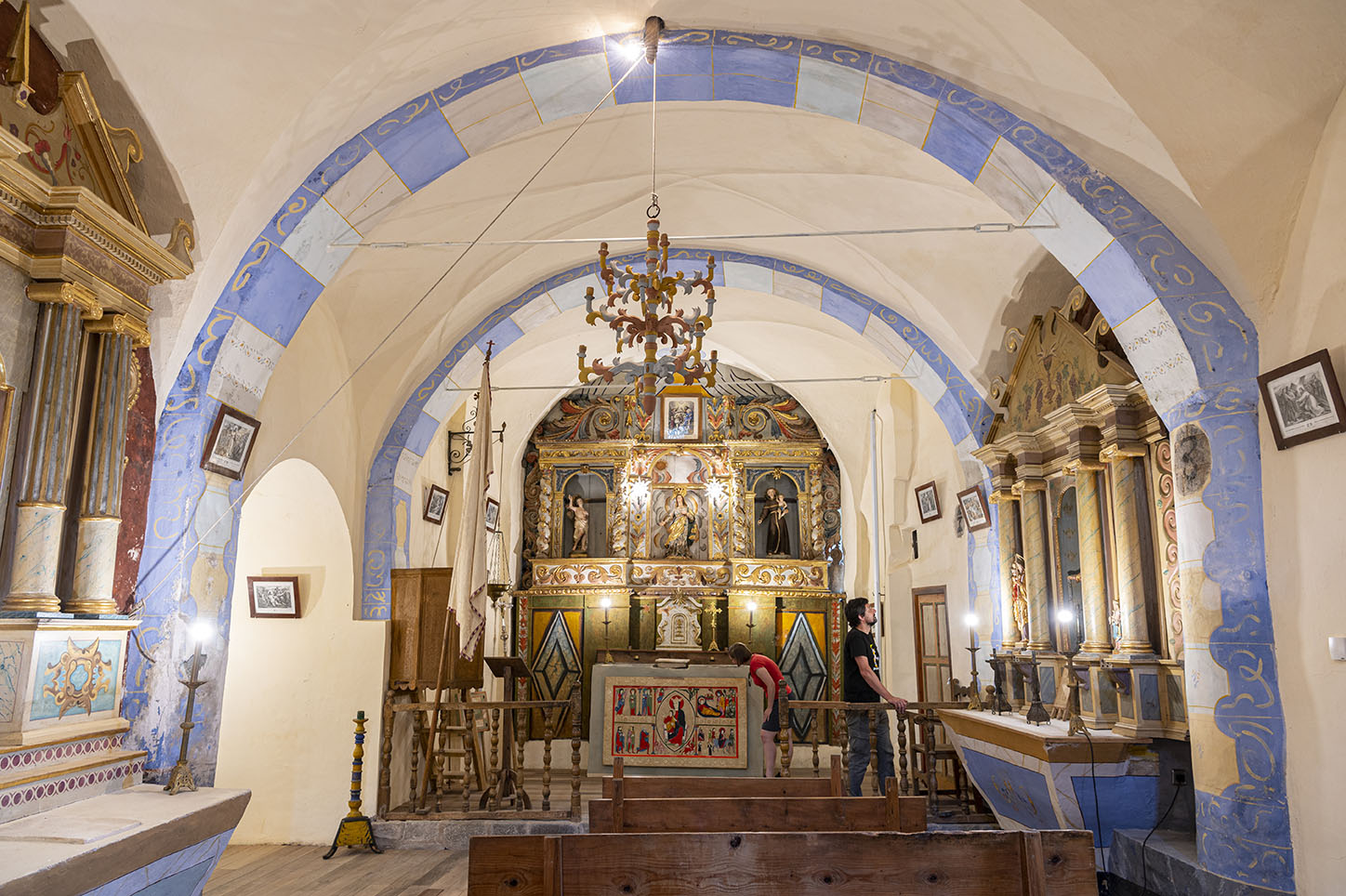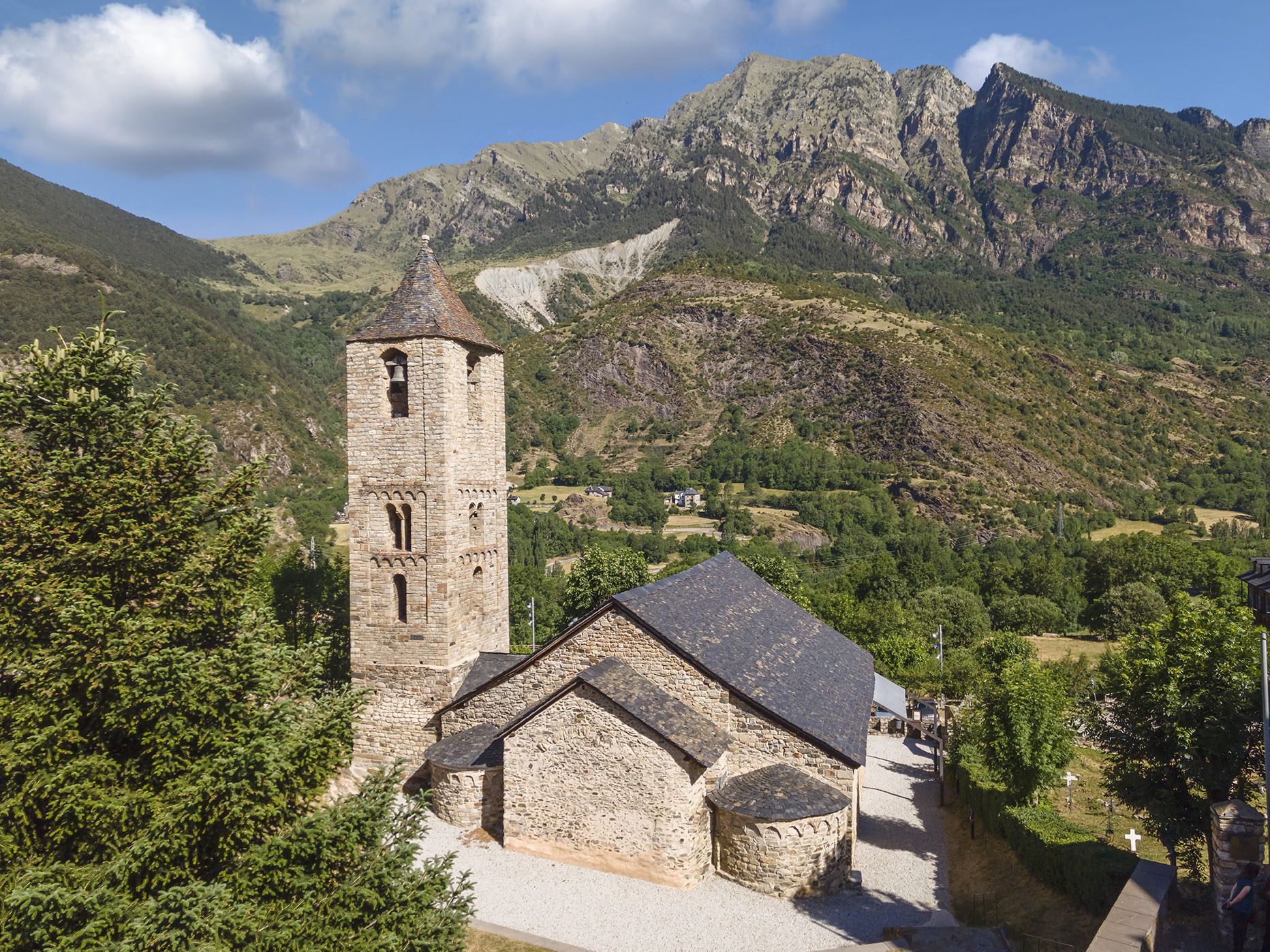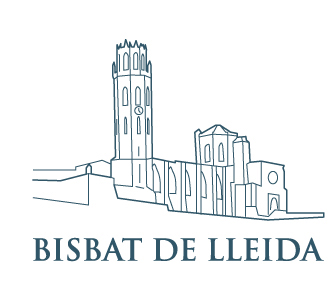Santa Maria de Cardet preserves one of the most spectacular apses in the valley. The church was built on the steep slope of the mountain, capitalising on the terrain’s unevenness to build a small crypt inside, the only one in the entire complex. Unlike the other churches in the valley, here the bell tower has a gable, the result of the Baroque transformations that the church has undergone. During the latest restoration the aim was to maintain the interior of the church as it was in the early 20th century.































